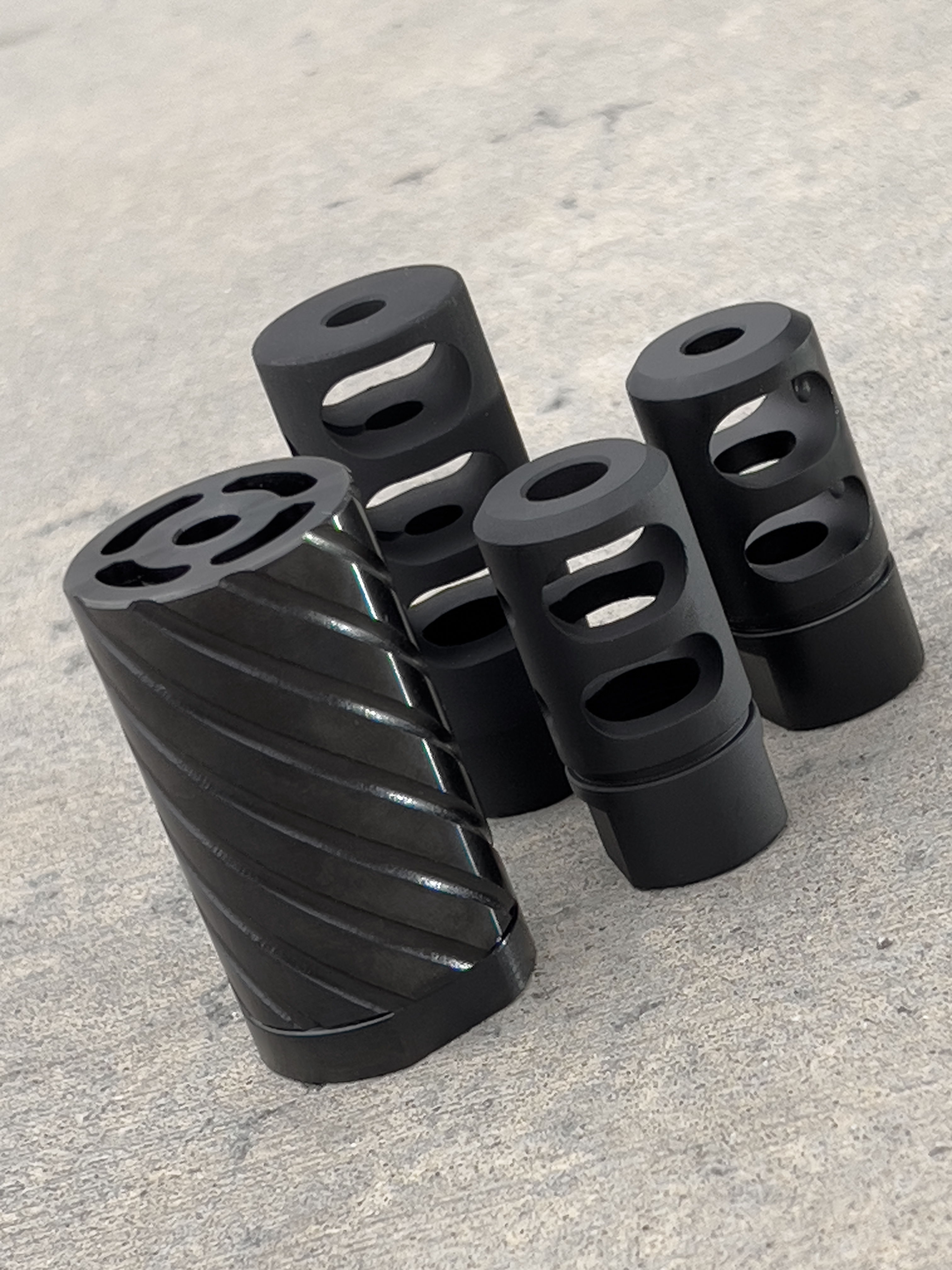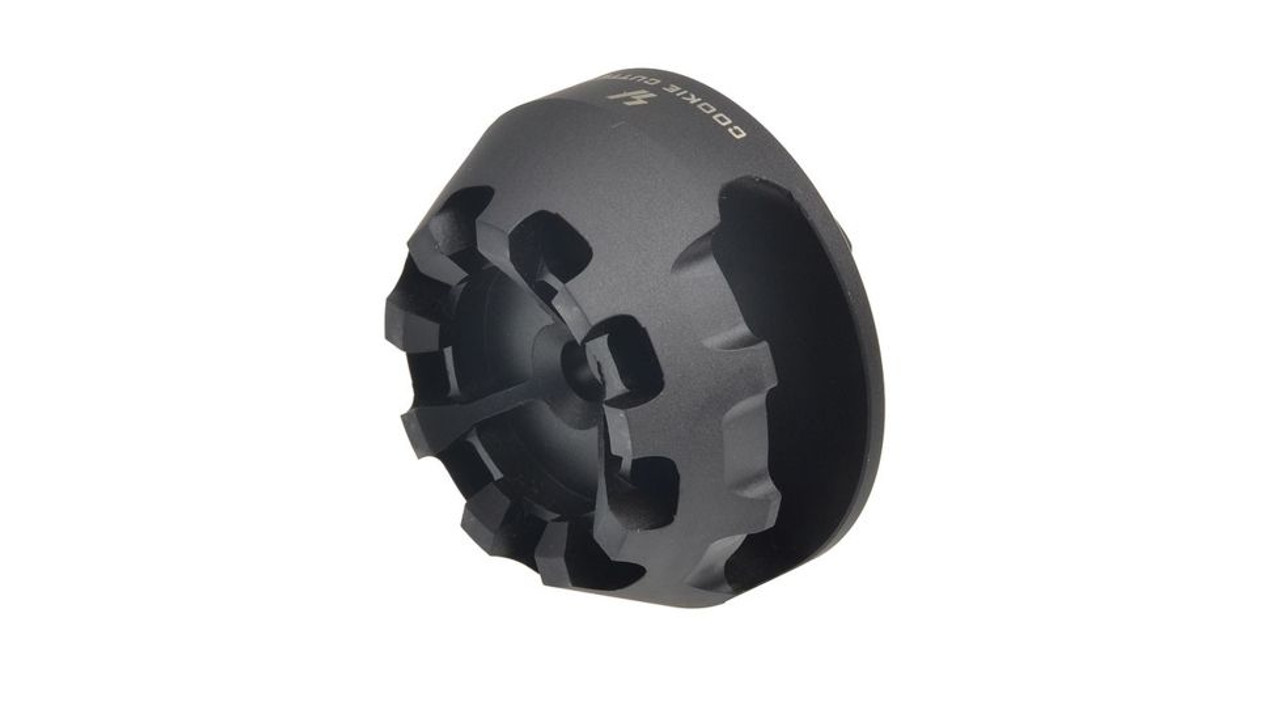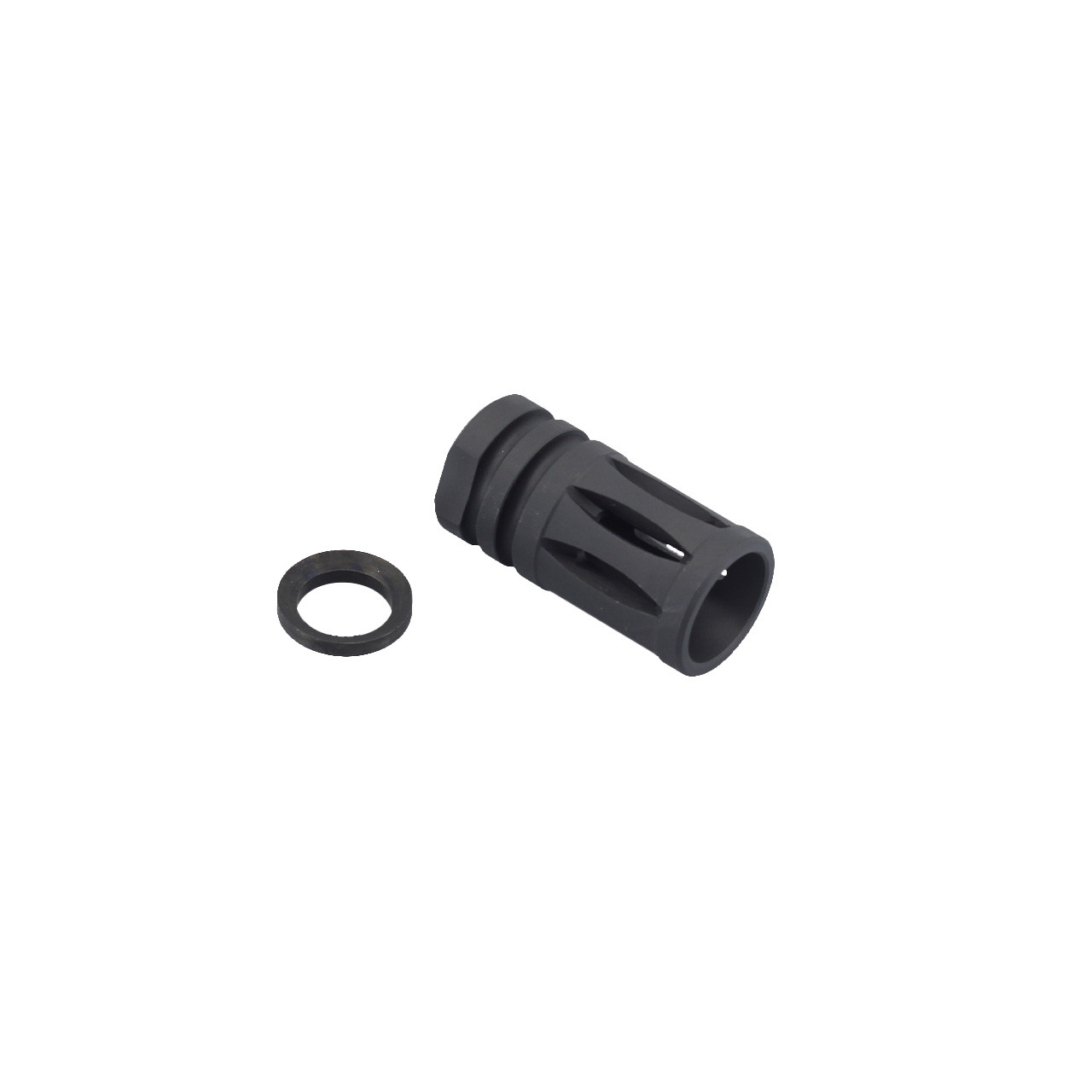Understanding the Differences Between Muzzle Devices: Muzzle Brakes, Compensators, and Flash Hiders
Jun 11th 2025
Muzzle devices are critical components for optimizing the performance of rifles, especially AR-style platforms. Whether you're aiming to control recoil, reduce muzzle rise, or minimize flash signature, the right muzzle device can dramatically improve your shooting experience.
In this guide, we’ll break down the three most common types of muzzle devices — muzzle brakes, compensators, and flash hiders — to help you make an informed choice based on your needs and shooting style.
What Is a Muzzle Device?
A muzzle device is an attachment installed at the end of a rifle barrel. These devices are engineered to manipulate the gases expelled when a round is fired. Depending on the design, a muzzle device can reduce recoil, control muzzle movement, or disperse flash.

Muzzle Brake
Purpose: Recoil Reduction
A muzzle brake is designed to reduce felt recoil by redirecting high-pressure gases to the sides and slightly backward. This redirection counteracts the natural rearward movement of the firearm.
How It Works:
-
Vents on the side or at an angle expel gases outward.
-
Reduces the force pushing the rifle backward.
-
Improves control and comfort, especially with high-recoil calibers.
Best For: Long-range shooters, precision rifle setups, or anyone dealing with strong recoil.
Advantages:
-
Significant reduction in recoil.
-
Improved control and faster follow-up shots.
Disadvantages:
-
Increased noise and concussion.
-
Can be disruptive in team or indoor environments.

Compensator
Purpose: Muzzle Rise Reduction
A compensator controls muzzle rise by venting gases upward or at calculated angles. This counteracts the upward movement that typically follows each shot.
How It Works:
-
Features upward-facing ports or baffles.
-
Redirects gas to create downward pressure on the barrel.
-
Keeps muzzle flatter during rapid fire.
Best For: Competitive shooters, tactical trainers, and those who prioritize fast target reacquisition.
Advantages:
-
Keeps shots on target with less vertical movement.
-
Enhances accuracy during rapid fire.
Disadvantages:
-
Less recoil reduction compared to muzzle brakes.
-
Still contributes to noise and side blast.

Flash Hider
Purpose: Flash Suppression
A flash hider disperses and cools the burning gases exiting the barrel, reducing the visible muzzle flash. This is crucial in low-light conditions where flash can obscure vision or give away a shooter's position.
How It Works:
-
Multi-pronged or slotted designs break up and cool gases.
-
Diminishes visible light signature.
-
Does not significantly alter recoil or muzzle movement.
Best For: Tactical, military, law enforcement, or home defense use, especially in low-light scenarios.
Advantages:
-
Reduces flash that can blind the shooter or reveal position.
-
Less concussive than brakes or compensators.
Disadvantages:
-
Provides no recoil or muzzle rise control.
-
Often restricted in certain states and jurisdictions.

Comparison Table
| Feature | Muzzle Brake | Compensator | Flash Hider |
|---|---|---|---|
| Recoil Reduction | High | Moderate | None |
| Muzzle Rise Control | Moderate | High | None |
| Flash Suppression | None | Minimal | High |
| Noise & Blast | High | Moderate | Low |
Which Muzzle Device Is Right for You?
-
Choose a muzzle brake if recoil is your main concern, especially for larger calibers or precision shooting.
-
Choose a compensator if your focus is staying on target during fast, repeated shots.
-
Choose a flash hider if you shoot in low-light conditions or need to conceal your position.
Keep in mind that some devices are hybrids, combining the functions of brakes and compensators. Always check your local and state regulations, as some devices — especially flash hiders — may be restricted under certain laws (e.g., California's "featureless rifle" compliance).
Improve Your Rifle Setup with Hunter Select USA
Explore our selection of high-quality muzzle devices here. Whether you need a brake, compensator, or flash hider, we offer products that are reliable, tested, and ready for any application.

